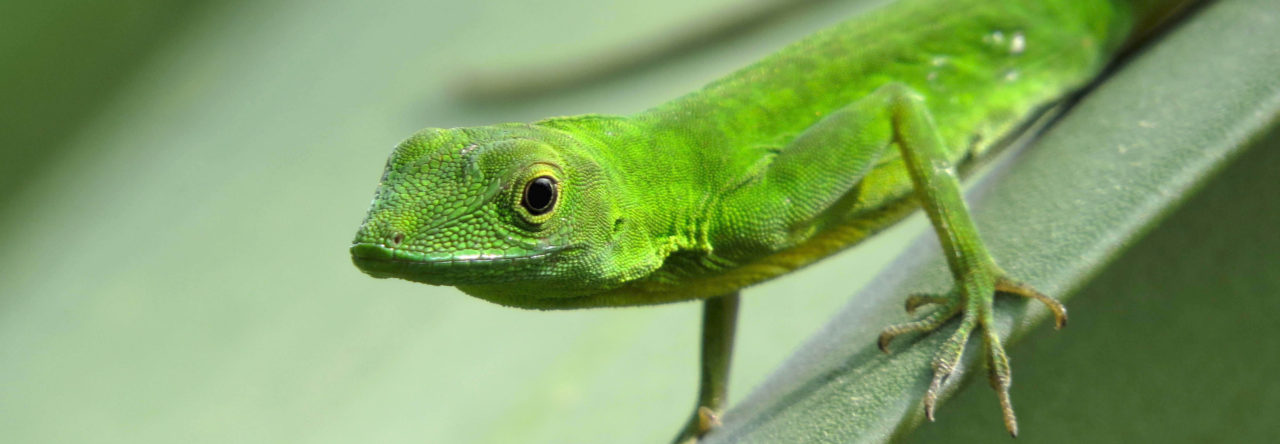Surely among the most extraordinary anoles are the six (or so) species in the genus Chamaeleolis. They’re sometimes called false chamaeleons, and for good reason–at a distance, you might mistake one for a chameleon. Not much is known about their natural history, but in a paper more than a decade ago, Manuel Leal and I showed that they behave in many respects just like chameleons, mostly in terms of their slow, jerky movements. They’re also renowned for their snail-munching ways, and we’ve had some great posts on that in the past.
Recently, the Anoland Facebook page posted a video of a C. guamuhaya eating a blueberry (above). Great stuff. I went to Youtube and found that the cinematographer, Torsten Kunsch, posted another video of possibly the same animal slowly dewlapping (below). In turn, this led me to consult Youtube for other Chamaeleolis videos. There are a bunch, though not a huge number, all seeming to be of captive animals. If I recall correctly, a documentary on Cuban wildlife that we screened a while back has some footage of wild individuals. More is needed!
- Evolution in Real Time on Lizard Island - March 23, 2025
- Spider Snags Adult Anolis osa - March 22, 2025
- An Homage to the Green Anoles of New Orleans - March 21, 2025


Kevin de Queiroz
Cool, especially all the chewing. However, if Anolis is a genus, then Chamaeleolis (a nested taxon) should not be. Let’s call it the Chamaeleolis clade.
Skip Lazell
“documentary on Cuban wildlife” – “This video does not exist.” Would have been great to see!